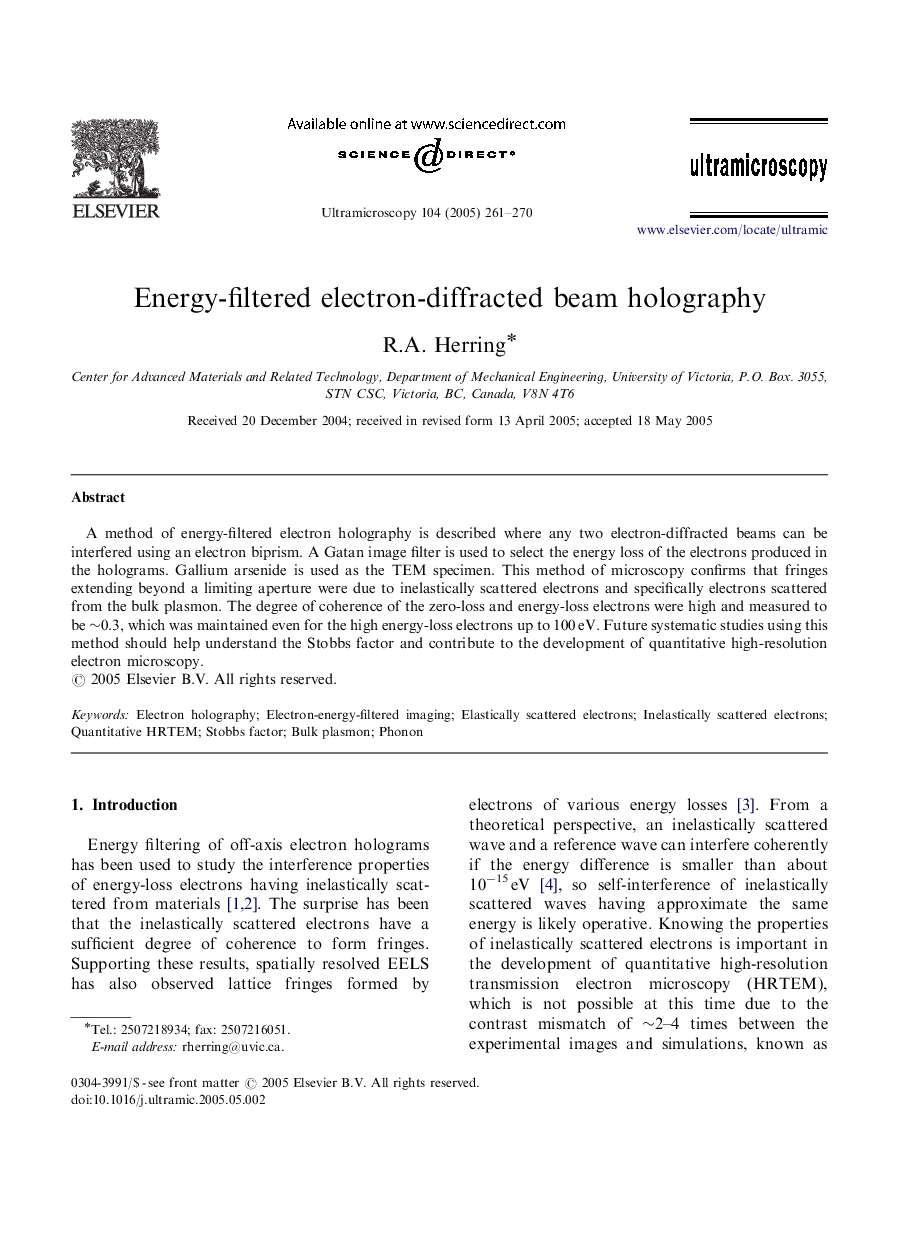| Article ID | Journal | Published Year | Pages | File Type |
|---|---|---|---|---|
| 9816896 | Ultramicroscopy | 2005 | 10 Pages |
Abstract
A method of energy-filtered electron holography is described where any two electron-diffracted beams can be interfered using an electron biprism. A Gatan image filter is used to select the energy loss of the electrons produced in the holograms. Gallium arsenide is used as the TEM specimen. This method of microscopy confirms that fringes extending beyond a limiting aperture were due to inelastically scattered electrons and specifically electrons scattered from the bulk plasmon. The degree of coherence of the zero-loss and energy-loss electrons were high and measured to be â¼0.3, which was maintained even for the high energy-loss electrons up to 100Â eV. Future systematic studies using this method should help understand the Stobbs factor and contribute to the development of quantitative high-resolution electron microscopy.
Related Topics
Physical Sciences and Engineering
Materials Science
Nanotechnology
Authors
R.A. Herring,
